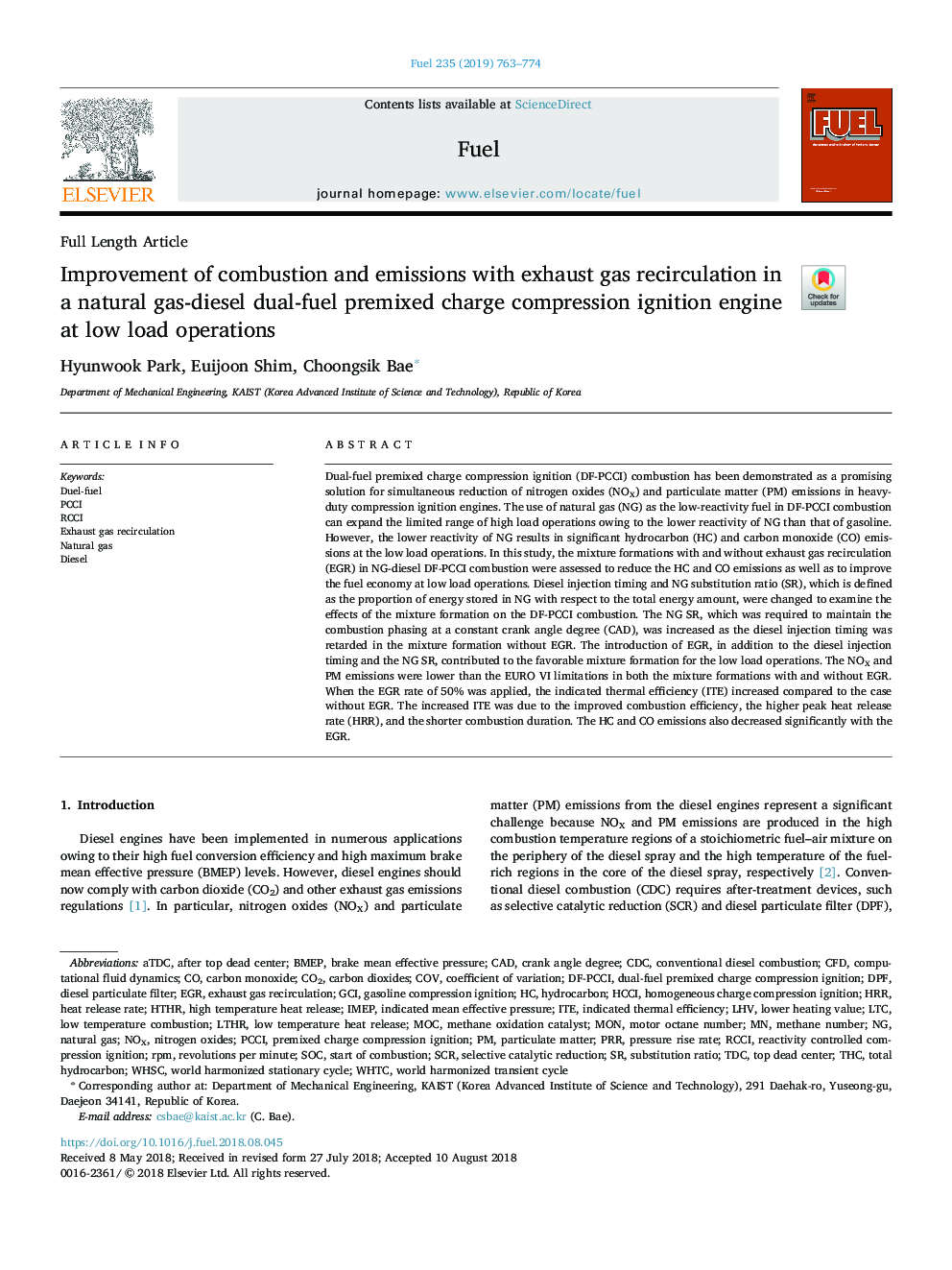| کد مقاله | کد نشریه | سال انتشار | مقاله انگلیسی | نسخه تمام متن |
|---|---|---|---|---|
| 11000543 | 1424929 | 2019 | 12 صفحه PDF | دانلود رایگان |
عنوان انگلیسی مقاله ISI
Improvement of combustion and emissions with exhaust gas recirculation in a natural gas-diesel dual-fuel premixed charge compression ignition engine at low load operations
ترجمه فارسی عنوان
بهبود احتراق و انتشارات با احتراق گاز خروجی در موتور گاز احتراق فشرده با بار سوخت دوگانه گاز طبیعی در عملیات کم بار
دانلود مقاله + سفارش ترجمه
دانلود مقاله ISI انگلیسی
رایگان برای ایرانیان
کلمات کلیدی
RPMTHCLTHRLTCRCCIBMEPLHVPCCIHRRHTHRIMEPGCIDPFCDCPRRITEMOCsubstitution ratioCarbon dioxidesWHSCWHTCEGRaTDCTDCHCCINOx - NOXReactivity controlled compression ignition - Reactivity کنترل جرقه فشرده سازیCOV - THELow temperature combustion - احتراق دما پایینConventional diesel combustion - احتراق دیزلی متعارفlower heating value - ارزش حرارت پایین ترLow temperature heat release - انتشار گرما در دمای پایینNitrogen oxides - اکسید نیتروژنIndicated thermal efficiency - بازده حرارتی نشان داده شده استafter top dead center - بعد از مرده مردهbrake mean effective pressure - ترمز فشار متوسط موثرMethane number - تعداد متانgasoline compression ignition - جرقه فشرده سازی بنزینpremixed charge compression ignition - جرقه فشرده سازی شارژ پیش مخلوطcrank angle degree - درجه زاویه دارDiesel - دیزلCFD - دینامیک سیالاتComputational fluid dynamics - دینامیک سیالات محاسباتیparticulate matter - ذرات معلقrevolutions per minute - سرعت در هر دقیقهHomogeneous Charge Compression Ignition - سوپاپ فشرده سازی همگنSOC - سیستم روی یک تراشهStart of combustion - شروع احتراقmotor octane number - شماره اکتان موتورCoefficient of Variation - ضریب تغییرCAD - طراحی به کمک رایانه یا کَدDiesel particulate filter - فیلتر ذرات دیزلیtop dead center - مرکز مرده بالاcarbon monoxide - منوکسیدکربنMON - مونPressure rise rate - نرخ افزایش فشارHeat release rate - نرخ انتقال حرارتIndicated mean effective pressure - نشان دهنده فشار متوسط موثر استhydrocarbon - هیدروکربنSelective catalytic reduction - کاهش کاتالیزوری انتخابی یا کاهش کاتالیستی انتخابیCO2 - کربن دیاکسیدtotal hydrocarbon - کل هیدروکربنNatural gas - گاز طبیعی exhaust gas recirculation - گردش بازگشتی گاز اگزوزHigh temperature heat release - گرما آزاد شده در دمای بالاSCR - یکسوساز کنترلشده با سیلیکون
موضوعات مرتبط
مهندسی و علوم پایه
مهندسی شیمی
مهندسی شیمی (عمومی)
چکیده انگلیسی
Dual-fuel premixed charge compression ignition (DF-PCCI) combustion has been demonstrated as a promising solution for simultaneous reduction of nitrogen oxides (NOX) and particulate matter (PM) emissions in heavy-duty compression ignition engines. The use of natural gas (NG) as the low-reactivity fuel in DF-PCCI combustion can expand the limited range of high load operations owing to the lower reactivity of NG than that of gasoline. However, the lower reactivity of NG results in significant hydrocarbon (HC) and carbon monoxide (CO) emissions at the low load operations. In this study, the mixture formations with and without exhaust gas recirculation (EGR) in NG-diesel DF-PCCI combustion were assessed to reduce the HC and CO emissions as well as to improve the fuel economy at low load operations. Diesel injection timing and NG substitution ratio (SR), which is defined as the proportion of energy stored in NG with respect to the total energy amount, were changed to examine the effects of the mixture formation on the DF-PCCI combustion. The NG SR, which was required to maintain the combustion phasing at a constant crank angle degree (CAD), was increased as the diesel injection timing was retarded in the mixture formation without EGR. The introduction of EGR, in addition to the diesel injection timing and the NG SR, contributed to the favorable mixture formation for the low load operations. The NOX and PM emissions were lower than the EURO VI limitations in both the mixture formations with and without EGR. When the EGR rate of 50% was applied, the indicated thermal efficiency (ITE) increased compared to the case without EGR. The increased ITE was due to the improved combustion efficiency, the higher peak heat release rate (HRR), and the shorter combustion duration. The HC and CO emissions also decreased significantly with the EGR.
ناشر
Database: Elsevier - ScienceDirect (ساینس دایرکت)
Journal: Fuel - Volume 235, 1 January 2019, Pages 763-774
Journal: Fuel - Volume 235, 1 January 2019, Pages 763-774
نویسندگان
Hyunwook Park, Euijoon Shim, Choongsik Bae,
